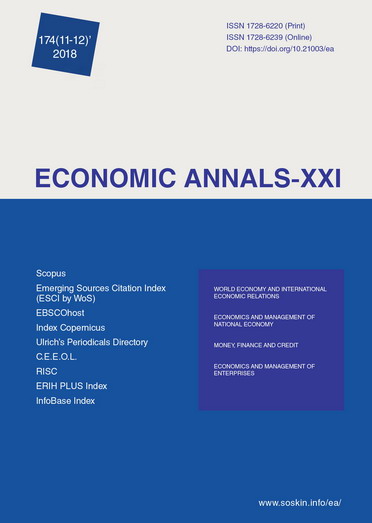Optimality of the minimum VaR portfolio using CVaR as a risk proxy in the context of transition to Basel III: methodology and empirical study
Optimality of the minimum VaR portfolio using CVaR as a risk proxy in the context of transition to Basel III: methodology and empirical study
Author(s): Taras Zabolotskyy, Valdemar Vitlinskyy, Volodymyr ShvetsSubject(s): Economy
Published by: Institute of Society Transformation
Keywords: Value-at-Risk (VaR); Conditional Value-at-Risk (CVaR); Basel III; Optimal Portfolio; Portfolio Expected Return; Investor Risk Aversion; Dow Jones Industrial Average (DJIA);
Summary/Abstract: The transition to the new standards in risk management announced by the Basel Committee (Basel III) leads to a change in the instrument of portfolio risk calculation. Such a transition, in particular, may lead to a loss of optimality of already formed portfolios and consequently to the necessity of portfolio restructurization. It should be noted that the process of portfolio restructurization is often quite costly not only in terms of financial costs but also in terms of time consuming. Therefore, an actual problem is the construction of tools that confirm the necessity of portfolio restructurization and, consequently, the expediency of investing resources in this process. Different statistical tests are often used to solve this problem. We are interested in tests for significance of the differences between the main characteristics of optimal portfolios obtained under different risk measures, in our case VaR and CVaR. The paper suggests a method for testing the minimum VaR portfolio for optimality in the case when CVaR is used as a measure for risk calculation. Sample estimators of two differences between the expected returns of the minimum VaR and the minimum CVaR portfolios and between the corresponding coefficients of investor risk aversion are considered. The asymptotic distributions of these estimates are provided. For empirical research, we select the daily returns of assets from the Dow Jones Industrial Average (DJIA) list that contains information on the prices of assets of 30 companies for the period from 01.September 2017 to 31. August 2018 (a total of 252 observations). We provide the Kolmogorov-Smirnov test about the normality of distribution of all the 30 asset returns, and for our analysis we choose only those assets for which the null hypothesis cannot be rejected at the 5% level of significance. We got 10 assets: the Coca-Cola Company; the Walt Disney Company; the Boeing Company; Johnson & Johnson; the Goldman Sachs Group; Apple Inc.; the Home Depot Inc.; Verizon Communication Inc.; UnitedHealth Group; DowDuPont Inc. Using simulation studies based on empirical data, we show that empirical distributions of the sample estimator of the difference between the expected returns of the minimum VaR and the minimum CVaR portfolios even for a small number of assets in portfolio (k=5) are significantly asymmetric and biased, and their convergence rate to the asymptotic distribution is rather slow. Instead, the properties of the sample estimator of the difference between the corresponding coefficients of investor risk aversion are significantly better. Moreover, an adjusted estimator for this difference is constructed. It is shown that for this estimator the convergence rate of empirical variances to the asymptotic one is slightly slower than for sample estimator while the empirical biases are close to zero. This fact justifies the possibility of using this estimator in practice.
Journal: Економічний часопис - ХХІ
- Issue Year: 174/2018
- Issue No: 11-12
- Page Range: 43-50
- Page Count: 8
- Language: English

